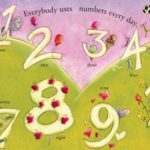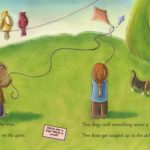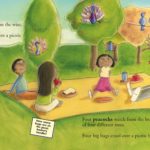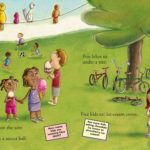Numbers

Helping Children Get the Most out of the Numbers Book
Even before children are ready to learn formal adding and subtracting, numbers and measurements are an important part of their learning. Young children quickly understand how to separate and combine groups of objects. By doing so, they also begin to learn that a number remains constant no matter how objects are arranged. Playing in this way also helps them begin
to understand the concepts of “adding to,” “taking away,” and other important numbers-related principles. The activities on the previous page will help increase their grasp of these concepts.
Sticks and Stones Collection. This activity is great for young children just learning to count and to understand that objects can be ordered sequentially based on size. If your children play this game indoors, provide them with buttons and pencils or even an assortment of different objects. Ask them to separate the objects according to size, making a line of smallest to largest.
Encourage your child to count out loud. You might also try separating the objects into two groups and asking questions such as “Which pile has more stones (or buttons, etc.)?” For the youngest children, simply have them group the objects into categories by size, color, or shape. Categorizing and sorting like this helps the child see patterns and relationships between objects, which is important for later mathematical skills.
Good Guesses. Older children will have fun playing this game with their friends, but younger ones will like it too, even if they aren’t yet ready to estimate numbers or grasp the concept. Put the objects in the jar yourself if all the children want to guess. Make sure there are enough objects in the jar so that it won’t be too easy to count them all at a glance. But also make sure
that the number is not so high as to take too much time to count them all. For small children who can’t yet write numbers, write down their guesses yourself. After everyone has guessed, encourage them to take the objects out of the jar and count them themselves.
Name Those Numbers. This activity helps children practice writing numbers in a way that is fun and engaging. It’s also a great activity for children who learn best through tactile (touching) or kinesthetic (moving) types of activities. Older children may be able to play this game without much help. If the one guessing keeps getting the answers right, suggest that the two players switch places after two or three right answers. Playing the game yourself with younger children is a fun and gentle way to guide them to “visualizing” and “feeling” the numbers they are learning about.










